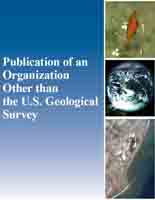Stratigraphic significance of siliceous microfossils collected during NAUTIPERC dives (off Peru, 5 °-6°S)
Links
- More information: Publisher Index Page (via DOI)
- Download citation as: RIS | Dublin Core
Abstract
The geological evolution of the northern Peru convergent margin can be traced using samples collected during deep-sea dives of the submersible Nautile. In the Paita area (5°–6°S), the sedimentary sequence was intensively sampled along the main scarp of the middle slope area. It consists of Upper Miocene (7–9 Ma) to Pleistocene siltstone, sandstone and rare dolostone. The age distribution of these samples is the basis for a new geologic interpretation of the multichannel seismic line CDP3.
Siliceous microfossils (both diatoms and radiolarians) show influence of both cold and temperature waters (local species mixed with upwelling ones). Diatom assemblages studied from the NP1-13 and NP1-15 dives bear a strong resemblance to assemblages from the Pisco Formation of southern Peru.
Micropaleontological data from siliceous microfossils, provide evidence for two main unconformities, one is at the base of the Quaternary sequence and the other corresponds to a hiatus of 1 Myr, separating the Upper Miocene (7–8 Ma) sediments from uppermost Miocene (5–6 Ma) sediments.
During the past 400 kyr, a wide rollover fold developed in the middle slope area associated with a major seaward dipping detachment fault. A catastrophic debris a valanche occurred as the results of an oversteepening of the landward flank of the rollover fold. The gravity failure of the slope, recognized by SeaBEAM and hydrosweep mapping, displaced enough material to produce a destructive tsunami which occurred 13.8 ± 2.7 kyr ago.
Study Area
| Publication type | Article |
|---|---|
| Publication Subtype | Journal Article |
| Title | Stratigraphic significance of siliceous microfossils collected during NAUTIPERC dives (off Peru, 5 °-6°S) |
| Series title | Marine Micropaleontology |
| DOI | 10.1016/0377-8398(94)00014-E |
| Volume | 24 |
| Issue | 3-4 |
| Year Published | 1995 |
| Language | English |
| Publisher | Elsevier |
| Description | 19 p. |
| First page | 287 |
| Last page | 305 |
| Country | Peru |
| Other Geospatial | Pacific Ocean |


